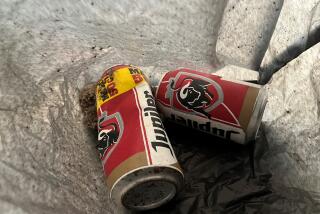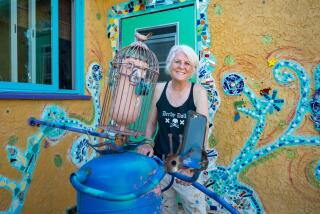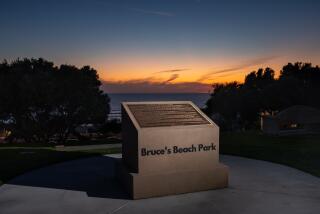Newport Beach has trouble keeping track of its art pieces
- Share via
Newport Beach will probably change the way it tracks its art pieces after discovering some pieces unaccounted for.
Previously, the city hadn’t regularly updated its inventory, and as of Wednesday, five pieces — donated to the city or purchased at a combined value of $675 — were unaccounted for. Those were out of an inventory of 236 pieces with a total known value of $841,650, city officials said.
“We are not sure if the five are actually lost — it’s generally our record-keeping that has not been up to par,” City Manager Dave Kiff said in an email.
And with a beefed-up focus on the city’s culture, including a nearly $1-million investment into new art and events, Mayor Keith Curry said ensuring that things are in order is key.
“It’s important that we maintain a good inventory of all of our art,” he said Thursday.
He added that moves to improve practices wouldn’t require council action and that corrective steps had already been taken.
After decades of receiving and purchasing art that runs the gamut in terms of value, from unnumbered prints to large commissioned sculptures, the city’s official record of its art became patchy, Kiff explained.
“Over the years of Newport Beach’s history, well-meaning residents gave us stuff. Some with value, some not,” he wrote. “I think folks back then didn’t want to hurt the donors’ feelings and accepted them graciously, adding them to our art inventory.”
As a result, he wrote, pieces of art that had deteriorated to the point of having little or no value were disposed of and taken out of the inventory.
“One problem is that our record-keeping was not robust enough to state each piece’s reason for no longer being in the inventory,” he wrote. “To me, yes, that’s a problem. It’s more likely a problem with bad record-keeping than irresponsible art management.”
The changes follow a recent Orange County Register article reporting that the city had misplaced dozens of pieces, according to two inventories taken nearly a decade apart.
More to Read
Sign up for Essential California
The most important California stories and recommendations in your inbox every morning.
You may occasionally receive promotional content from the Los Angeles Times.













